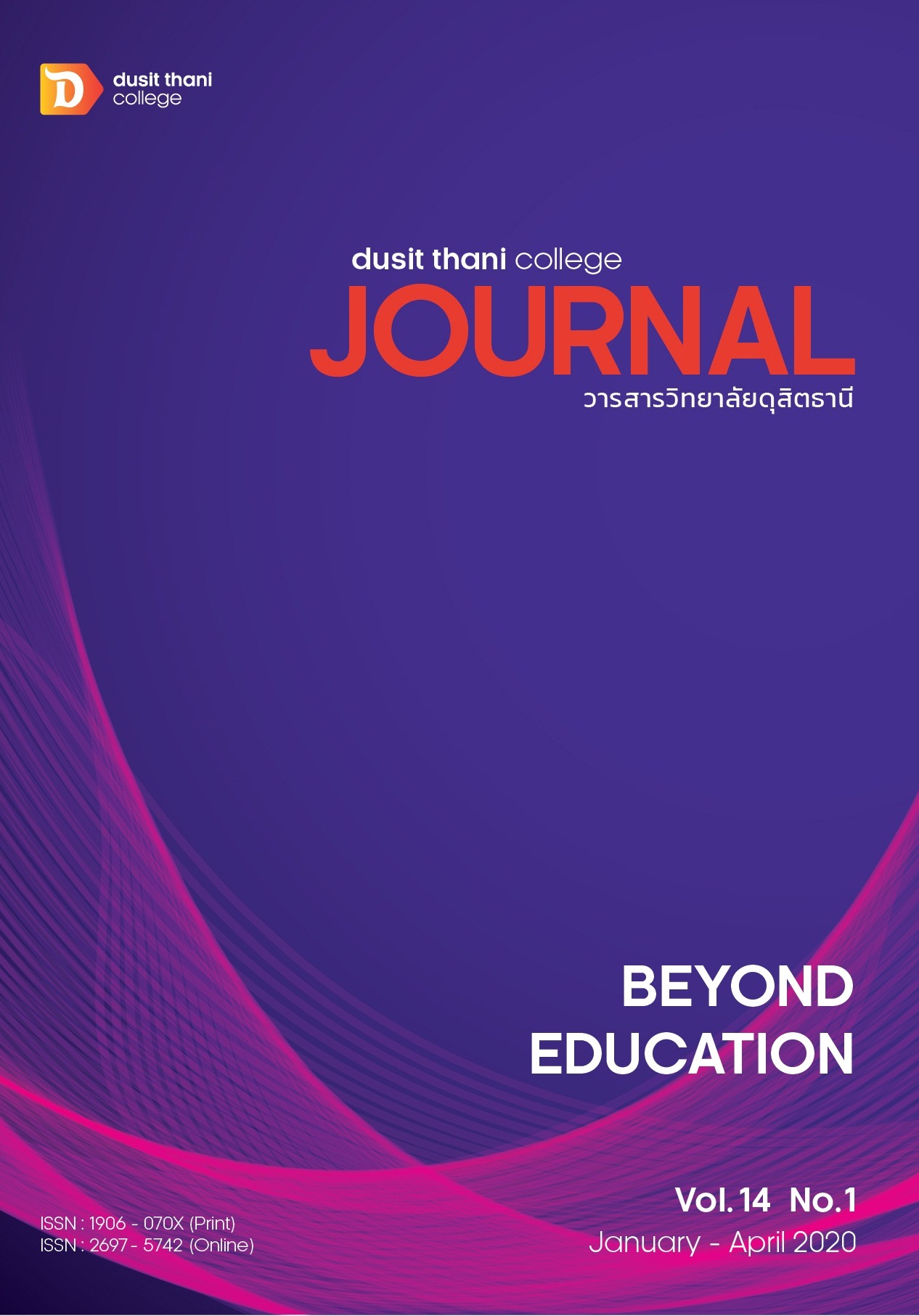Pet-friendly Policy in Upscale and Luxury Tourism Accommodations: Service Customizations Under SERVQUAL
Main Article Content
Abstract
The trend of people traveling with their pets has become an emerging market in tourism and hospitality business. In upscale hotels, customization strategies according to various segments of customers have become competitive advantages. According to the expanding of pet related market, setting the boundaries of services through pet policy to cater pet owners and non-pet owners while maintaining the luxury image could be crucial for the management. The detailed studies of consumer’s behaviors and SERVQUAL as the service measurement are the major area of this academic paper. This article is divided into four major parts. Part one describes the overview of pet-owning consumer behavior, including the growth rate and constraint of pet-friendly policy in tourism and hospitality accommodation segment, objectives, scope of research, and definition of operational terms are also mentioned. Part two is the literature review of SERVQUAL together with pet policies as service customization strategies in hotel management responding to pet related consumers behavior. Part three is the conclusion of the paper and part four is the implications and discussion for the further research.
Article Details
Article Screening Policy
- All research and academic articles to be published must be considered and screened by three peer reviews in the relevant field / article.
- All articles, texts, illustrations and tables published in the journal are the personal opinions of the authors. Editors don't always have to agree. And no responsibility whatsoever is the sole responsibility of the author.
- The articles to be published must never be published. Where did you first publish? And not in the consideration of other journals If the audit found that there has been a duplicate publication It is the sole responsibility of the author.
- Any article that the reader sees as being plagiarized or impersonated without reference. Or mislead the work of the author Please let the journal editor know it will be your greatest blessing.
References
by Hotels.com. Retrieved from https://bbc.om/news/business-36578382.
2. Belcher, E.B. (2011). Perceptions of Advertising by Dog Owners and Non-Dog Owners:
An Experimental Study. (Master’s Thesis of Business Administration),
Appalachin State University.
3. Boya, O.U., Doston, J.M., Hyatt, M.E. (2012). Dimensions of the dog-human Relationship:
A segmentation approach. Journal of Targeting, Measurement and Analysis for Marketing, 20(2), 133 - 143.
4. Carr, N., Cohen, S. (2009). Holidaying with the family pet: No Dogs Allowed. Tourism and Hospitality Research, 9(4), 290 - 304.
5. Chen, A., Peng, N., Hung, P. K. (2013). Developing a Pet Owners’ Tourism Constraints Scale – The Constraints to take Dogs to Tourism Activities. Tourism Research, 16, 15 - 324.
6. Crawford, K. E., Worsham, L., & Swinehart, R. E. (2015). Benefits derived from Companion animals, and the use of the term “Attachment”. Journal of Interaction of People and animals, 19 (2), 98 - 112.
7. Doston, J.M., Hyatt, M.E., Clark, D.J. (2010) Traveling with the family Dog: Targeting an Emerging Segment. Journal of Hospitality Marketing & Management, 20(1), 1 - 23.
8. National Statistical Office (2017, November). Statistics on the Number of Population and Houses at Database Currently. Retrieved on from http://www.dopa.go.th.
9. Nieminen S. (2015). Service Package for Hotel Guests with Dogs. (Bachelor’s thesis), University of Haaga-Helia, Helsingi, Finland.
10. Ottenbacher M. (2007). Innovation Management in the Hospitality Industry: Different Strategies for AchievingSuccess. Journal of Hospitality & Tourism Research, 31(4), 431-454.
11. Parasuraman. (1988). SERVQAL: A Multiple-Item Scale for Measuring Consumer Perceptions of Service Quality. Journal of Retailing, 64 (1).
12. Petfriendly. (2017). Summary of some big chains’ hotels pet polices. Retrieved from https://petfriendly.com
13. Power, E. (2008). Furry Families: making a human-dog family through home. Social & Cultural Geography, issn: 1464 - 9365.
14. Schumpeter, J. A. (1961). The Theory of Economic Development. New York: Oxford Univ. Press.
15. Suksanguan, W. (2016). Factors Affecting Decisions concerning Pet-Related Service in Bangkok, Thailand. The Asian Conference on Business & Management 2016.
16. Taillon, J., MacLaurin, T., Yun, D. (2015). Hotel Pet Policies: An Assessment of Willingness to pay for travelling with pet. Journal of Tourism and Hospitality Research, 26(1), 89-91.
17. Thansettakij, (2017). Pet related market value in Thailand in the year 2017. Retrieved from http://m.news.thansettakij.com /content/154641
18. Victorino, L., Verma, R., Plaschka G., Dev, C. (2005). Service Innovations and Customer choices in the Hospitality Industries. An International Journal, 15 (6), 555 - 576.
19. Zeithaml A., Parausuraman A., Berry. (1990). Delivering Quality Service – Balancing Customer Perceptions and Expectations. New Your Free Press.
20. Zhang, Y. (2012). People’s Attitude towards Dogs in Hotel Settings. (Master of Science Thesis), University of Purdue, USA.


